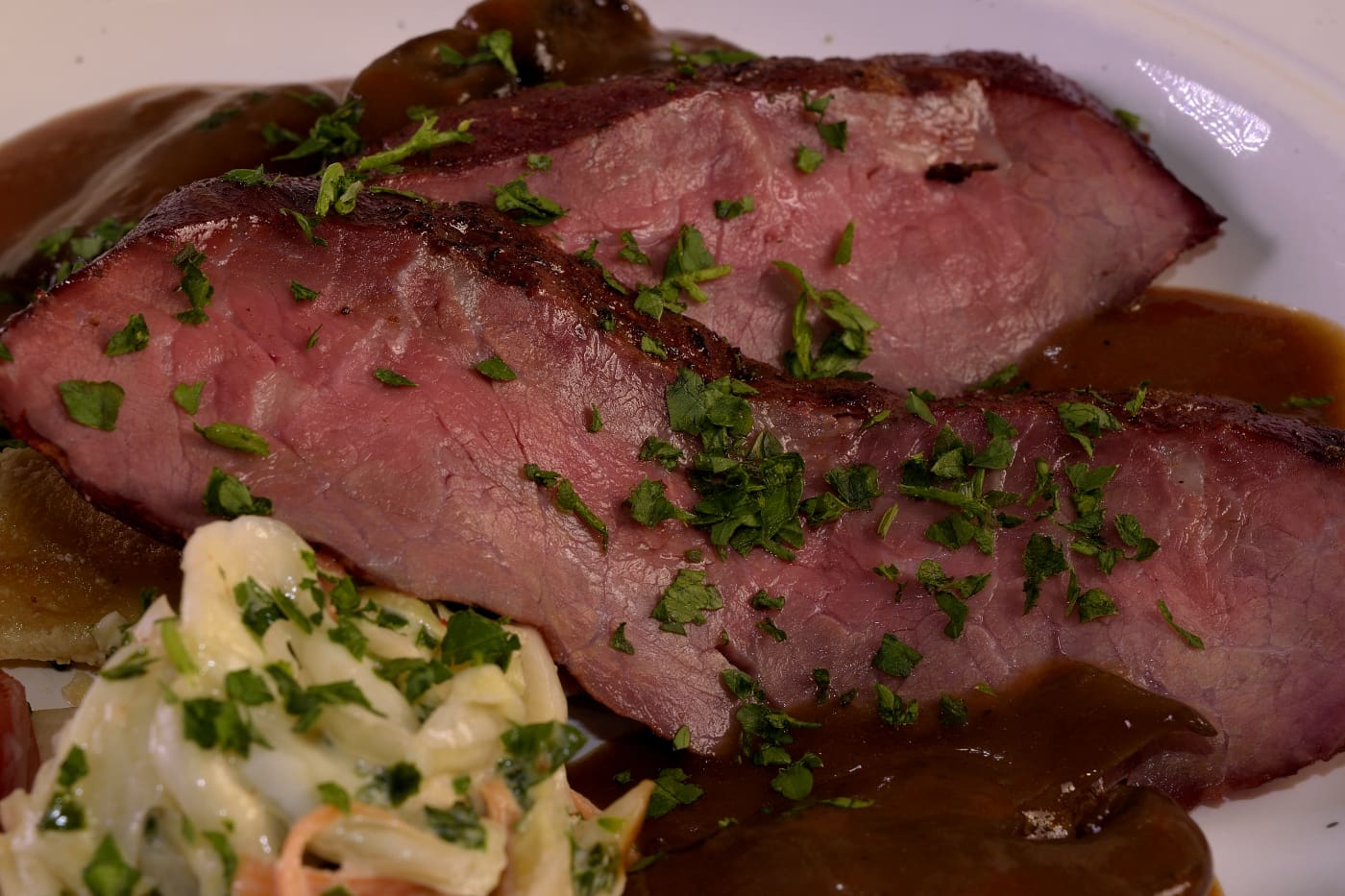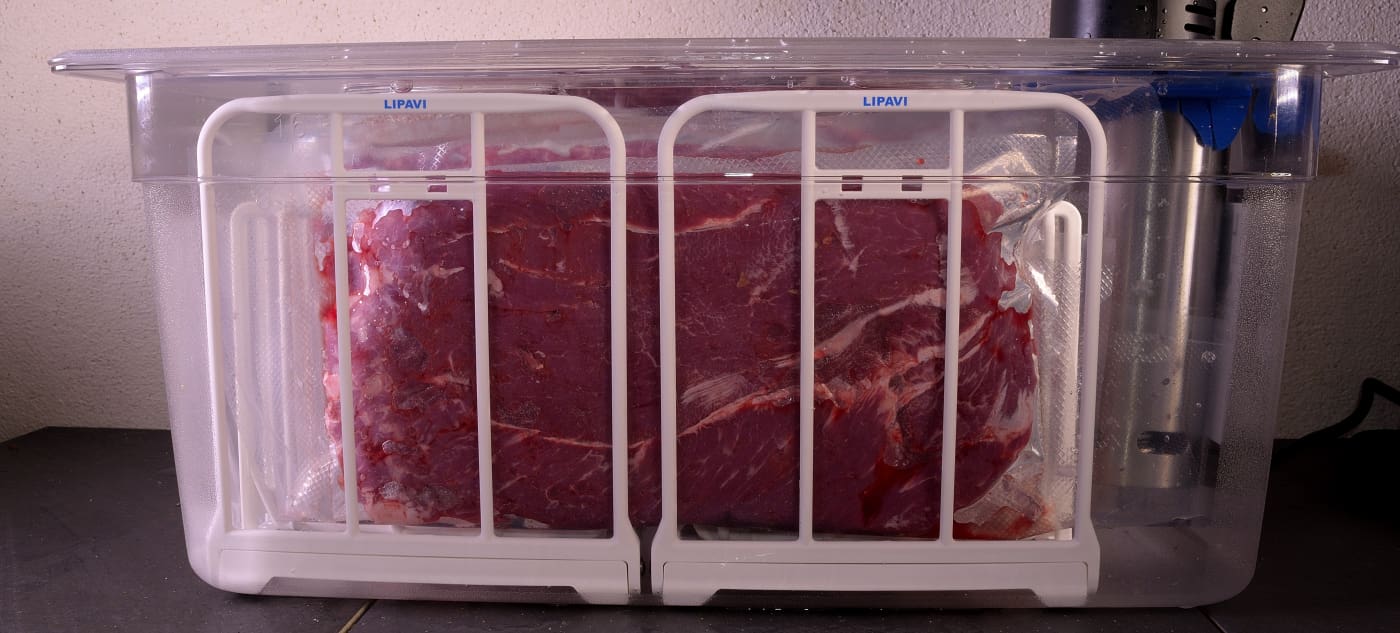Inkbird Immersion circulator, Lipavi C15 container, Lipavi C15L lid, N15 polycarbonate racks.
Serves 2-4
Level of difficulty 3
Procedure:
Seal the flat iron steak/roast in heat rated sous vide bags and process at 129 F/54 C X 6+ hours. This will pasteurize and tenderize the protein. Shock cold in iced water until the package achieves 70F/21 C. Refrigerate at 40 F/4 C until day of service. Cold shocking prevents autolysis in the steak, and also protects other foods in the refrigerator from temperature contamination. In this state, the steak/roast can be refrigerated for up to two weeks without any deterioration..
Day of service
Submerge the package in hot tap water (110 F/43 C) or a working sous vide bath to melt the gel in the package. Remove the roast from the package and stage onto a rack to drain.

Pat the roast dry.

Use a dredge/shaker to sprinkle the surface with powdered egg whites. A fresh egg white beaten with an equal amount of water will achieve the same result–apply sparingly.

Use a spray bottle filled with water to dissolve the powdered egg white–skip this step if you are using fresh egg white.

Sprinkle with your choice of seasonings. Today’s version was kosher salt, garlic, paprika, basil and a pinch of sugar. Flecks of parsley.
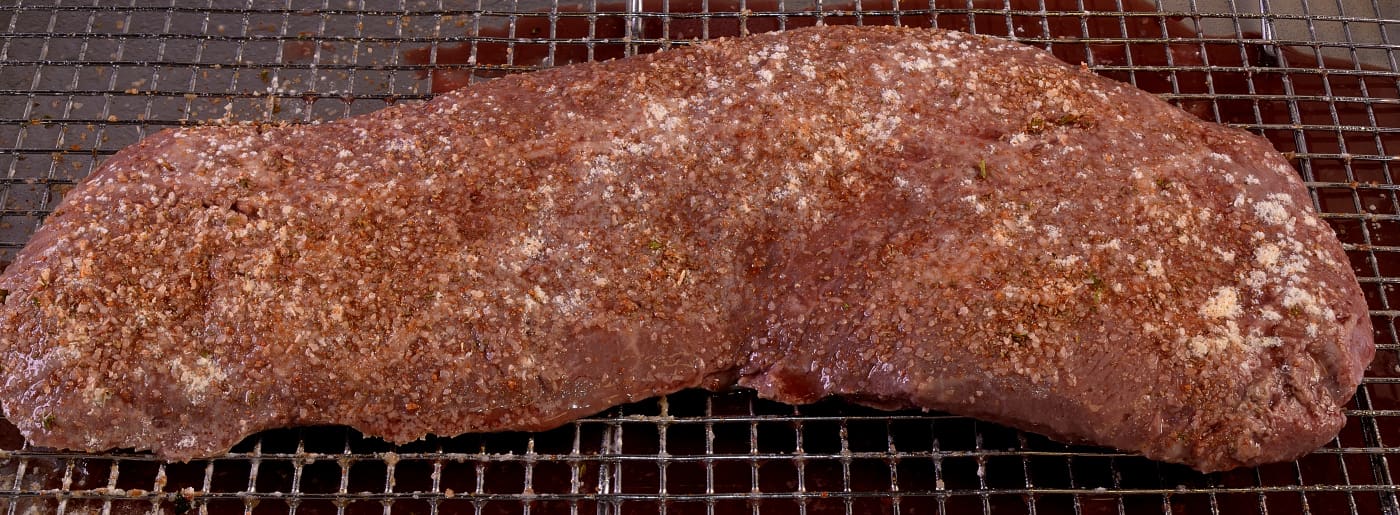
Turn the roast over and repeat the seasoning process.
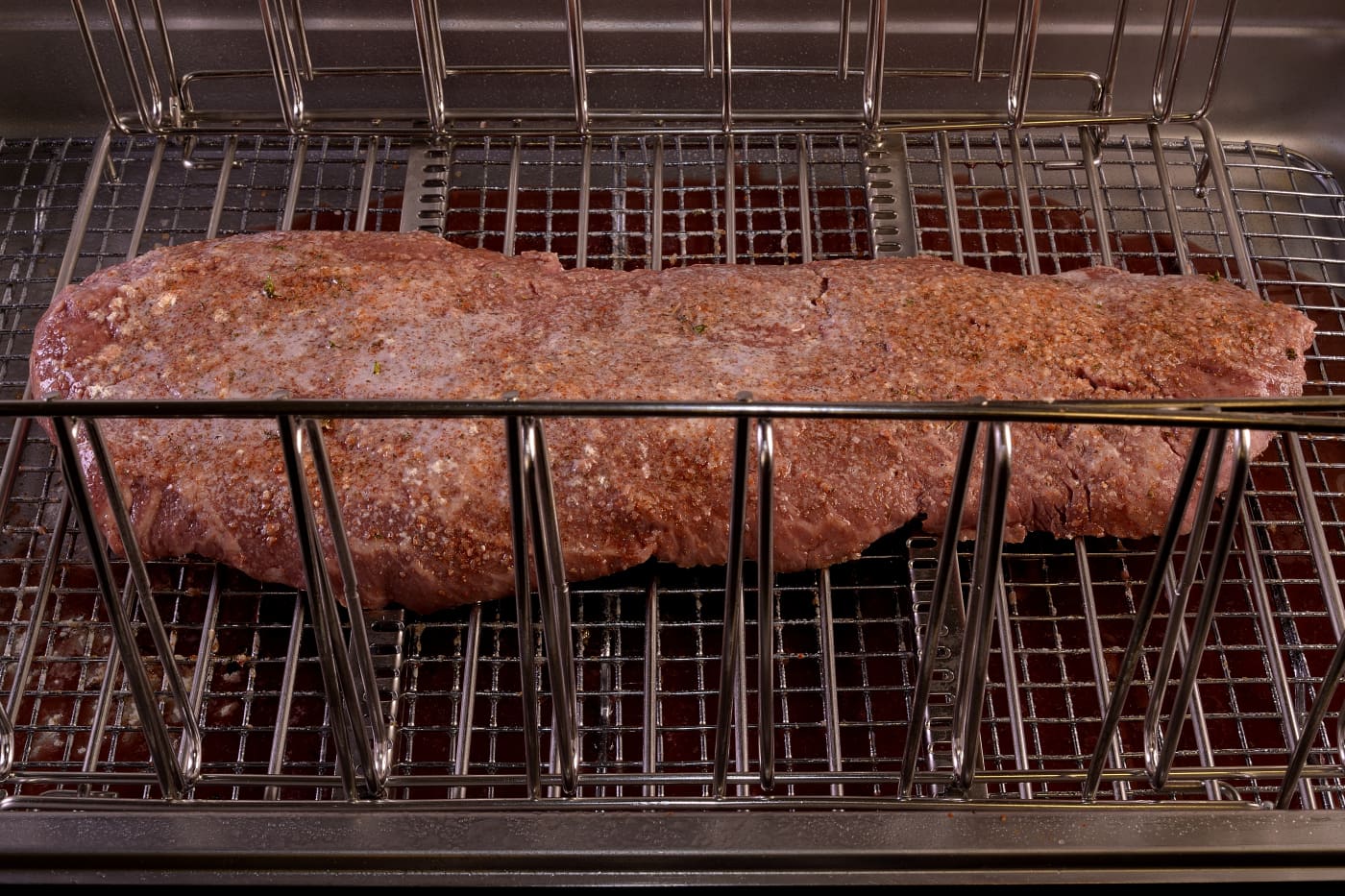
Transfer to a smoking rack–we use a marine quality 316L stainless steel Lipavi L10 rack; rust proof, dishwasher proof and smoker/oven proof. Mist with spray release or drizzle with oil.
Harvest the juices from the pan and clarify according to the procedure explained HERE–they can be used in any savory recipe that calls for stock or water.
Set your smoker as close to 180 F/80 C as possible to preserve a rare appearance (optional). We use a PID driven pellet grill, but any back yard smoker will suffice. The lower the temperature utilized, the more smoke flavor will be realized. Smoke the roast until it has achieved the desired appearance and an internal temperature of at least 125 F/52 C (mouth hot)–approximately three hours.
While you wait
Make the coleslaw as explained HERE. We left the roasted corn out of today’s model. Refrigerate.
Mushroom sauce:
Heat the 2 Tablespoons of oil in a skillet to 300 F/150 C. Turn off the burner and add the 2 Tablespoons of flour–it should foam immediately and will appear thin. DO NOT BROWN.

Add the sliced mushrooms to the pan and return to medium heat. The mushrooms will begin to wilt.

Add the brown stock to the pan, bring to a boil and simmer for 2 minutes. Check seasonings and keep warm. I use a home oven set on the warming function–170 F/77 C.
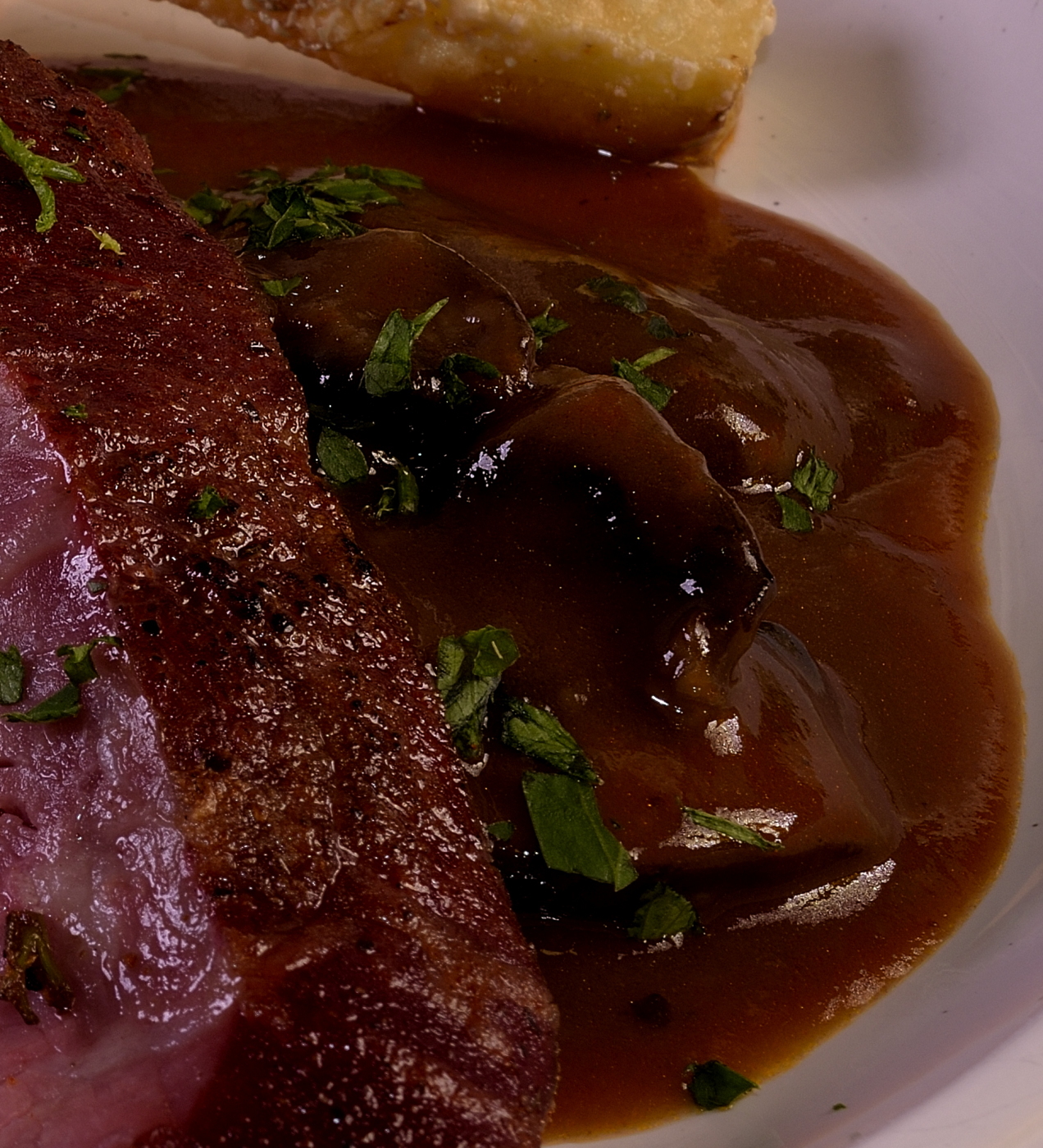
The sauce can also be reheated at service.
Long Branch potatoes

Cut the potato into a rectangular cube–this will remove most of the peel, but not all of it.
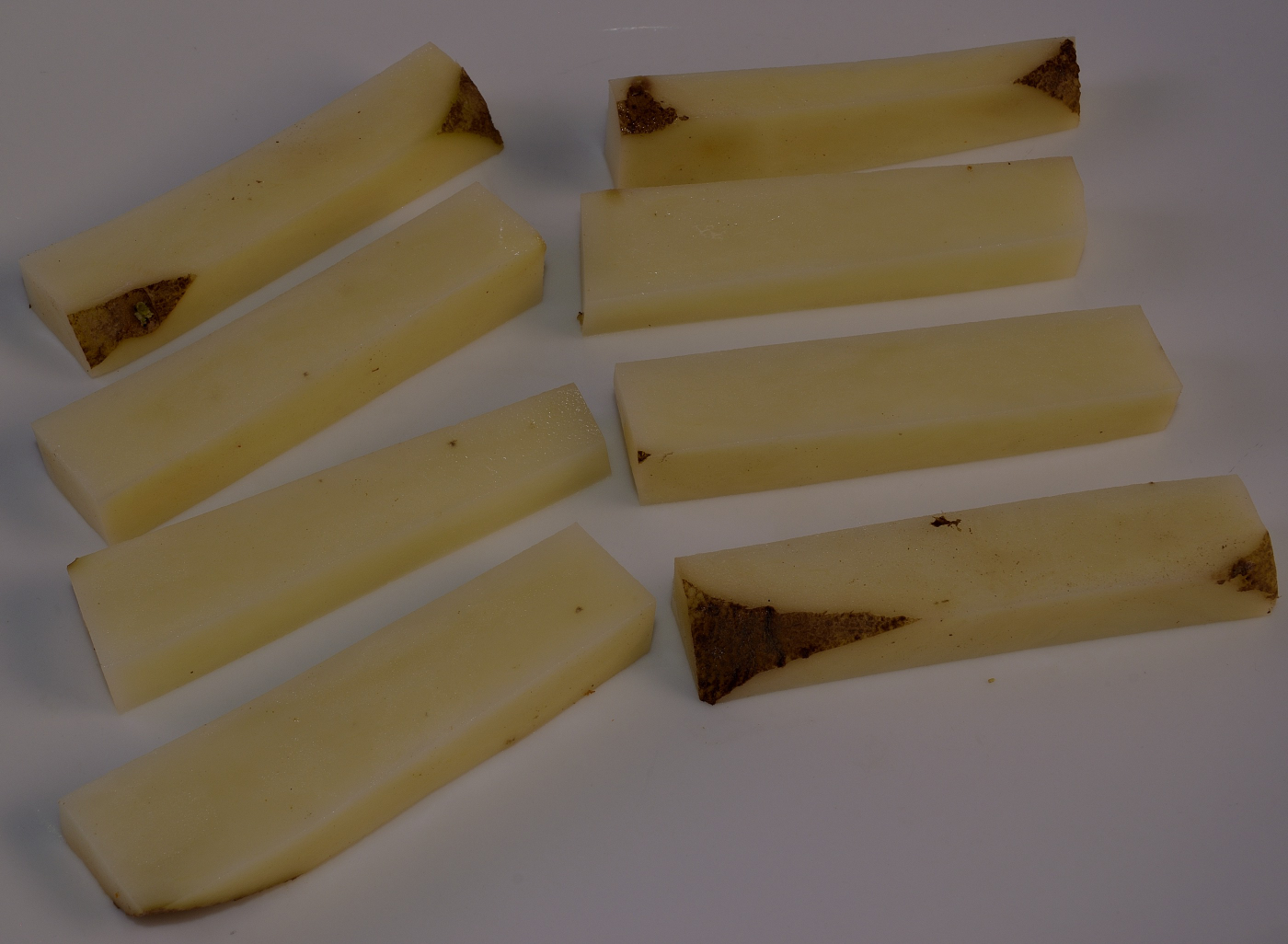
Divide the potato into 8 strips and stage onto a plate.
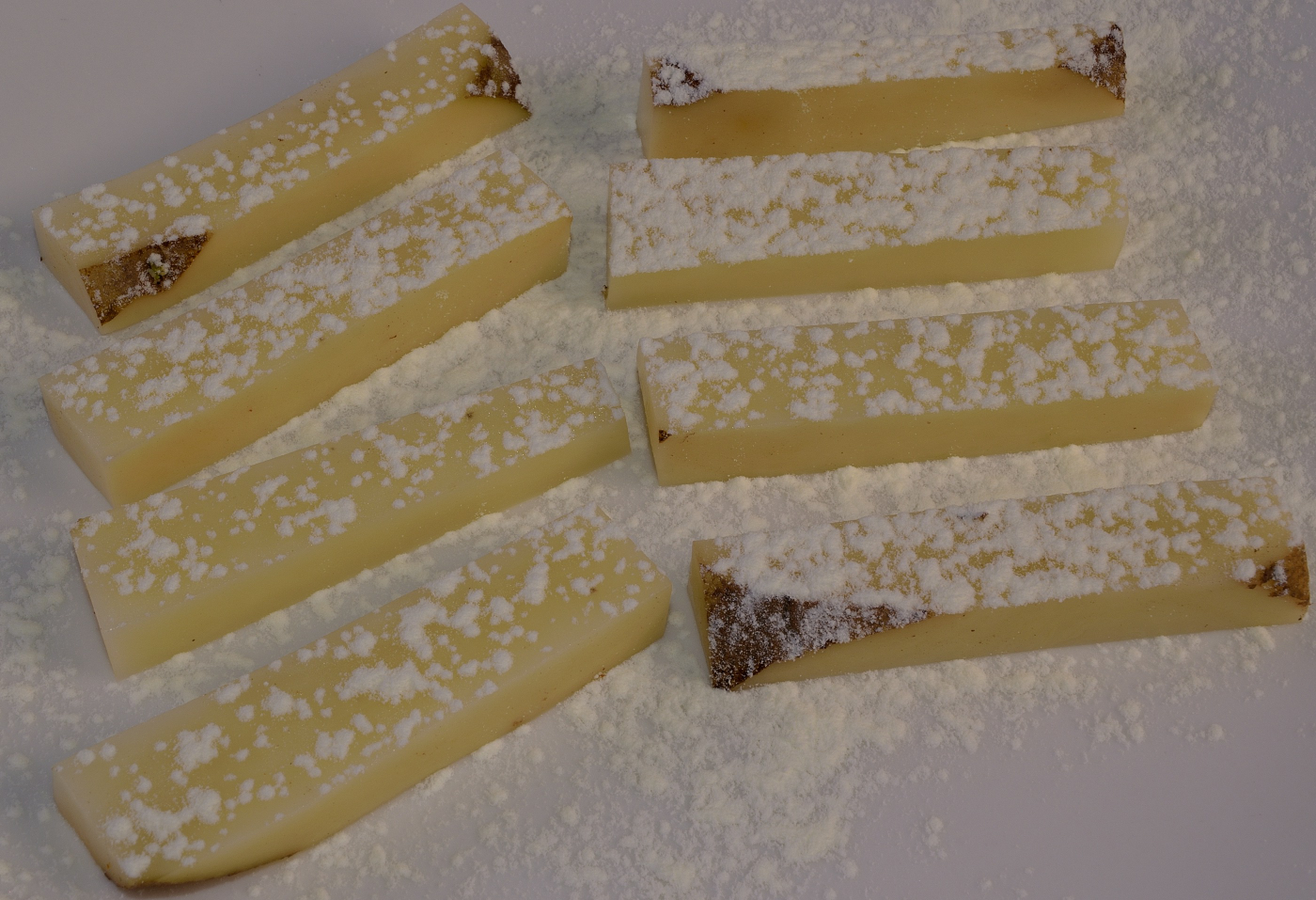
Sprinkle the potatoes with powdered egg white.
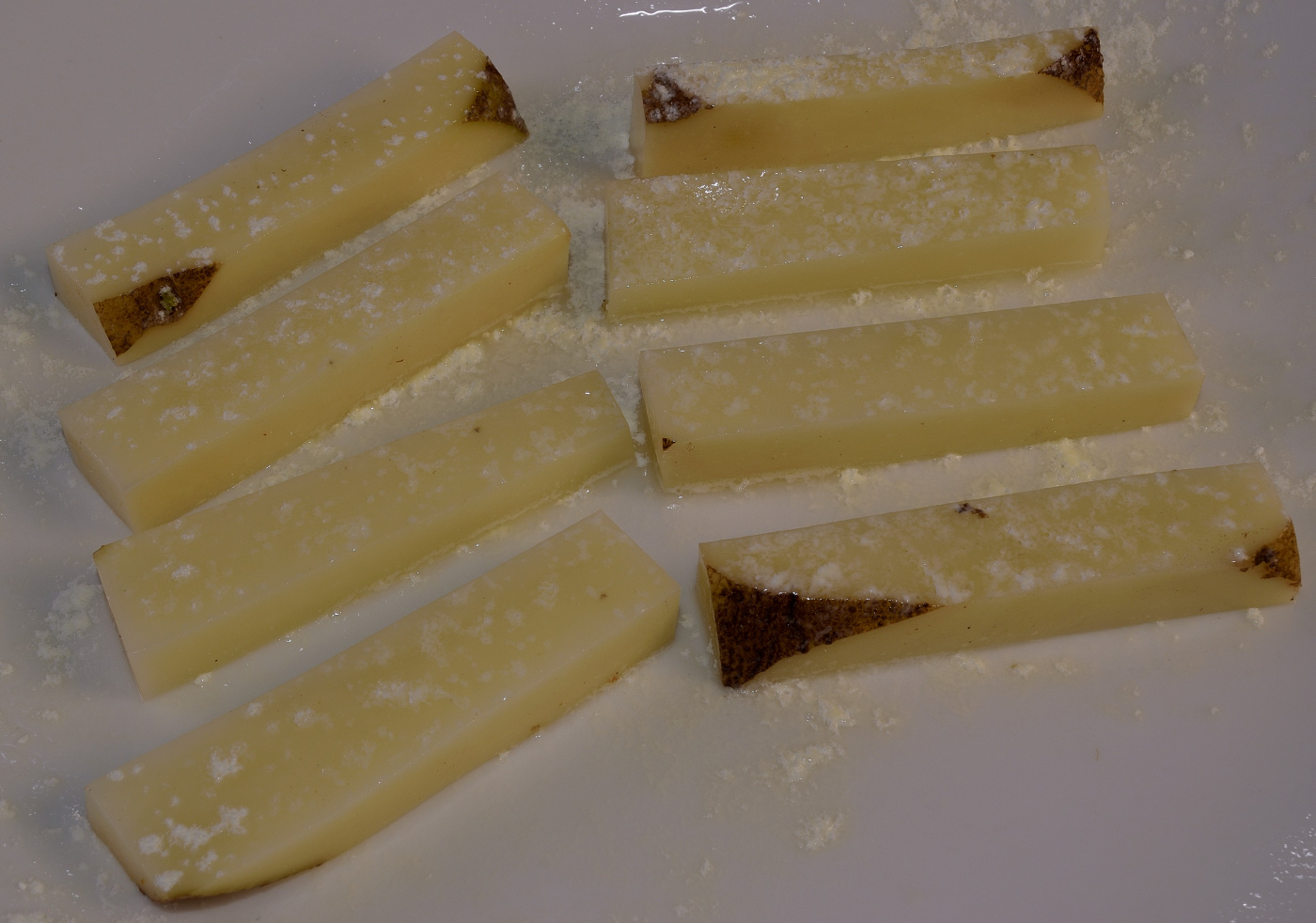
Mist with a few drops of water. Move the potatoes around and the egg white will dissolve.
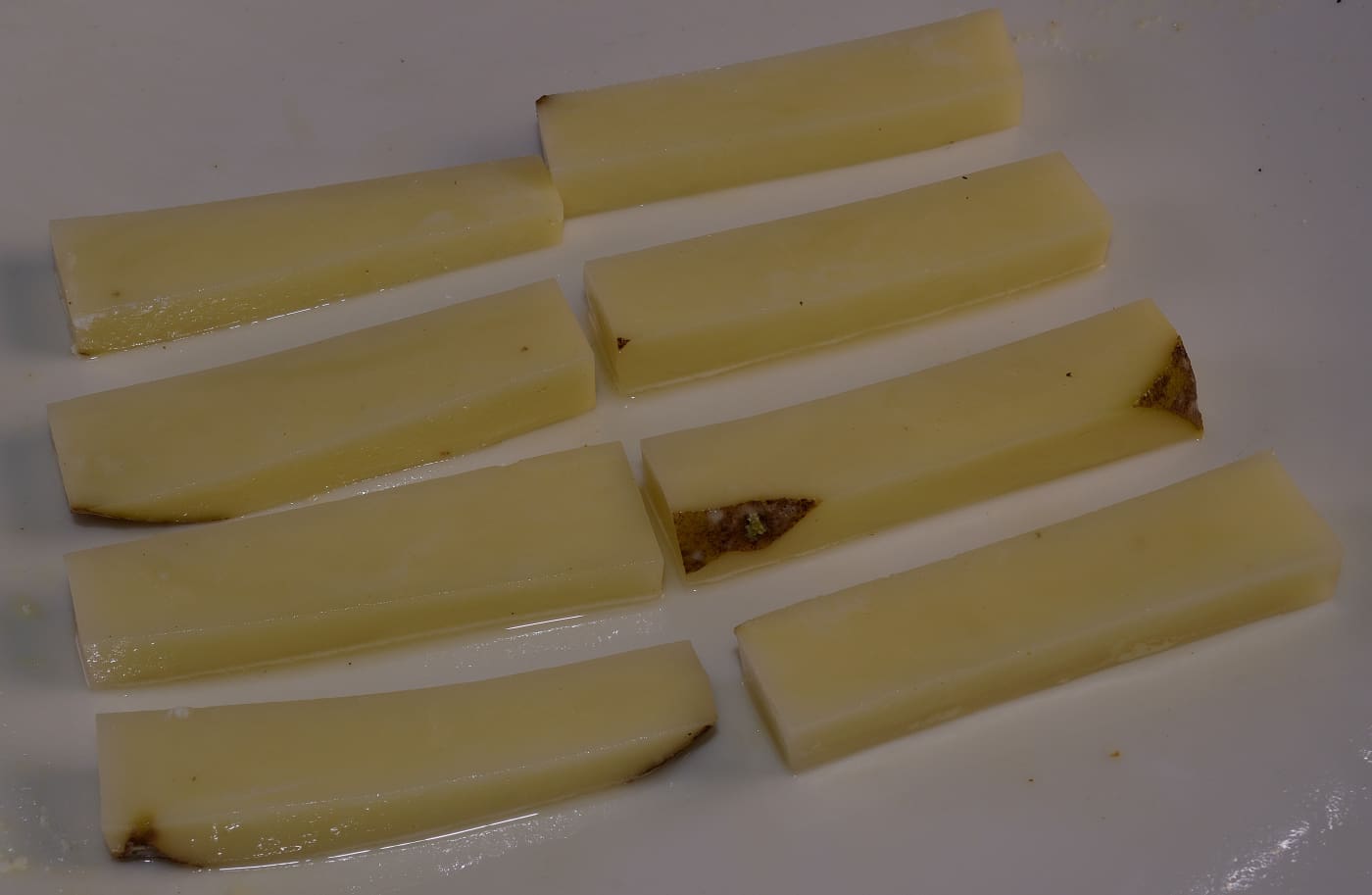
Remove any excess moisture from the plate.
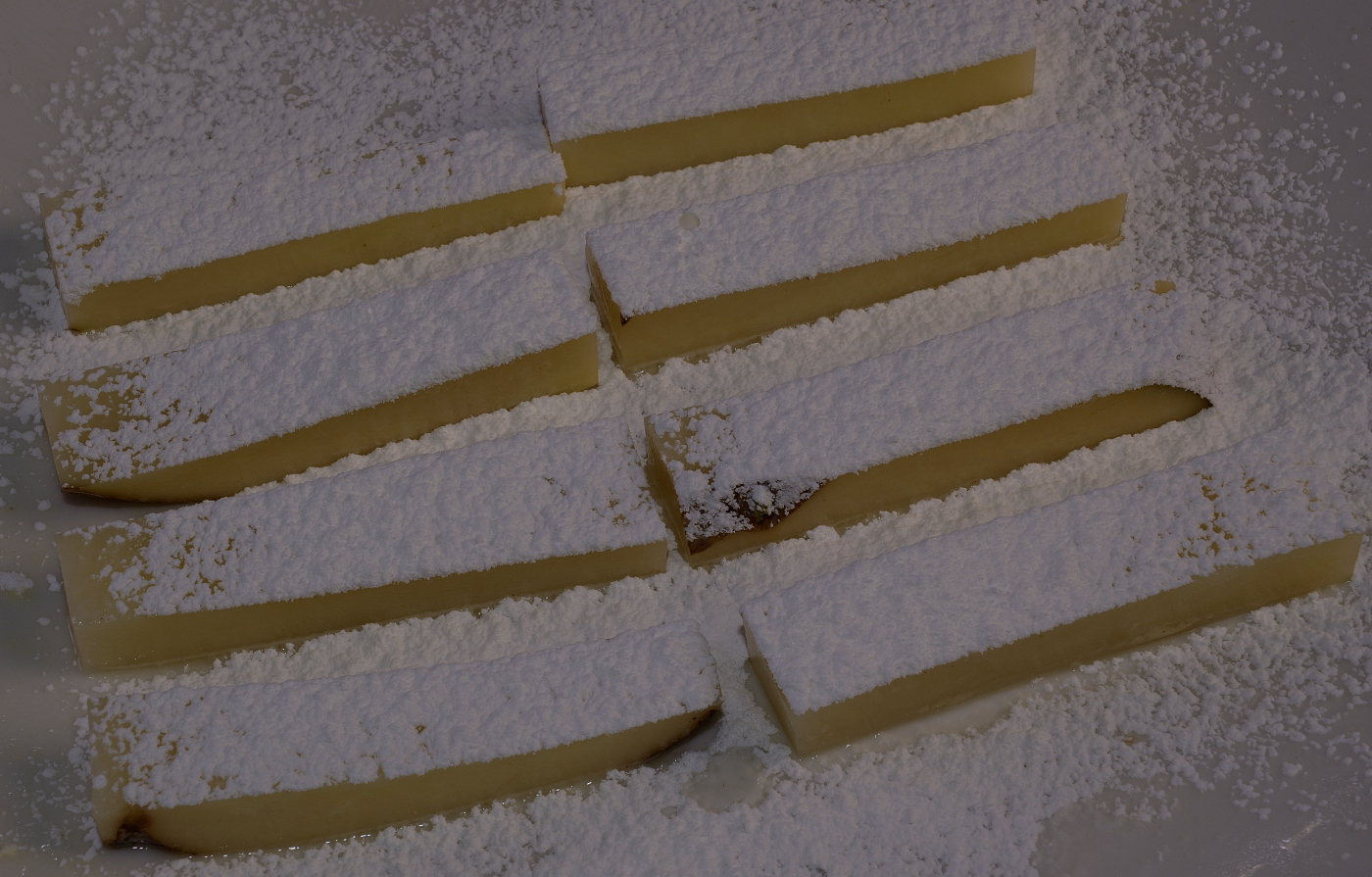
Sprinkle the potatoes with cornstarch.

Roll the potatoes in the corn starch until the surfaces are dry. Preheat the 2 cups oil to 250 F/121 C in a skillet–no more than half full. One at a time, shake the excess cornstarch off of each potato and submerge in the oil. Move around with a spatula to make sure the potato doesn’t stick to the bottom of the pan. Continue until all the potatoes are in the oil. Cook until the potatoes float and then drain. Strain the oil through a paper towel to remove the starch and return to the skillet.
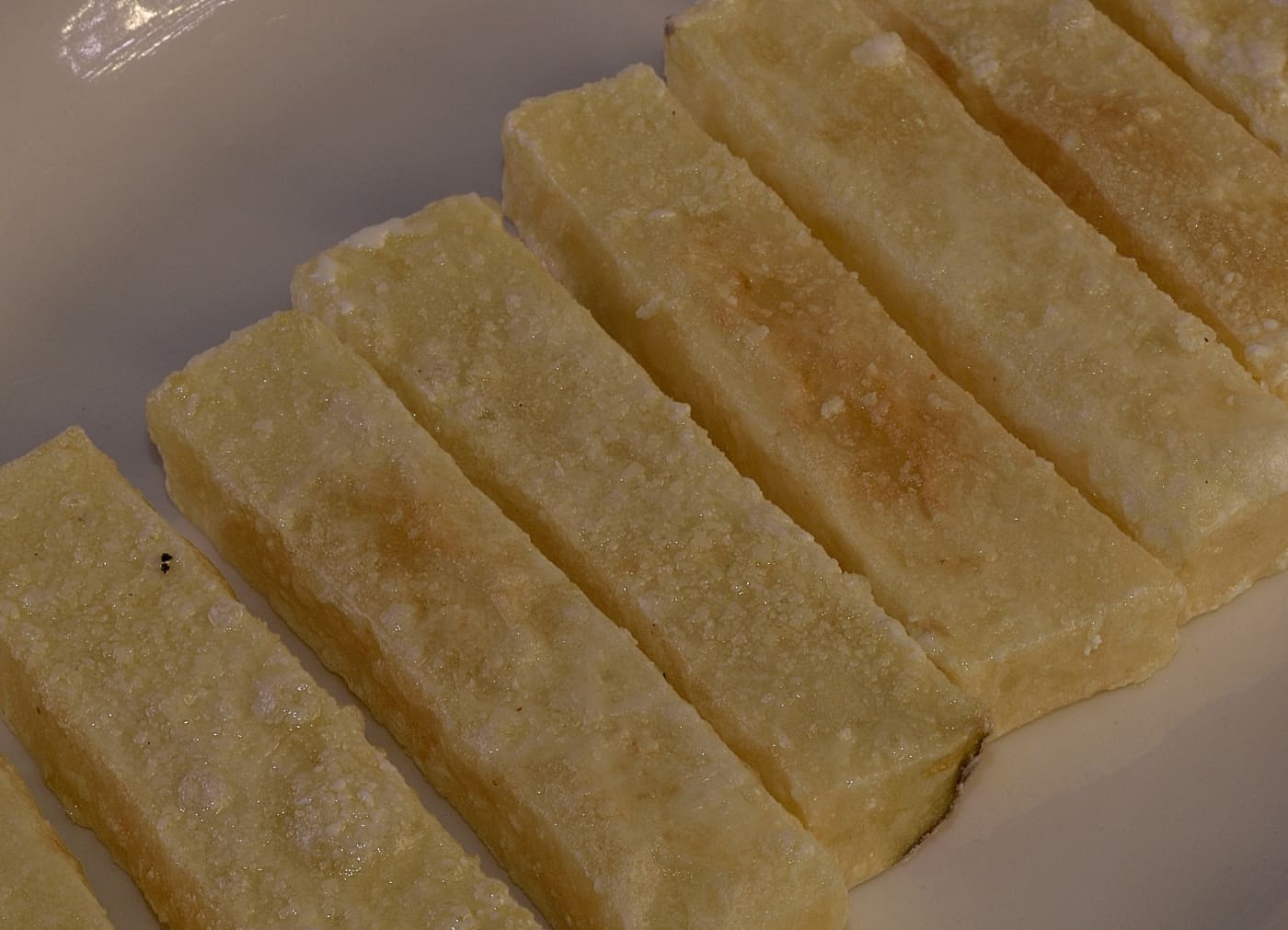
Stage the potatoes on to a plate and refrigerate until service.
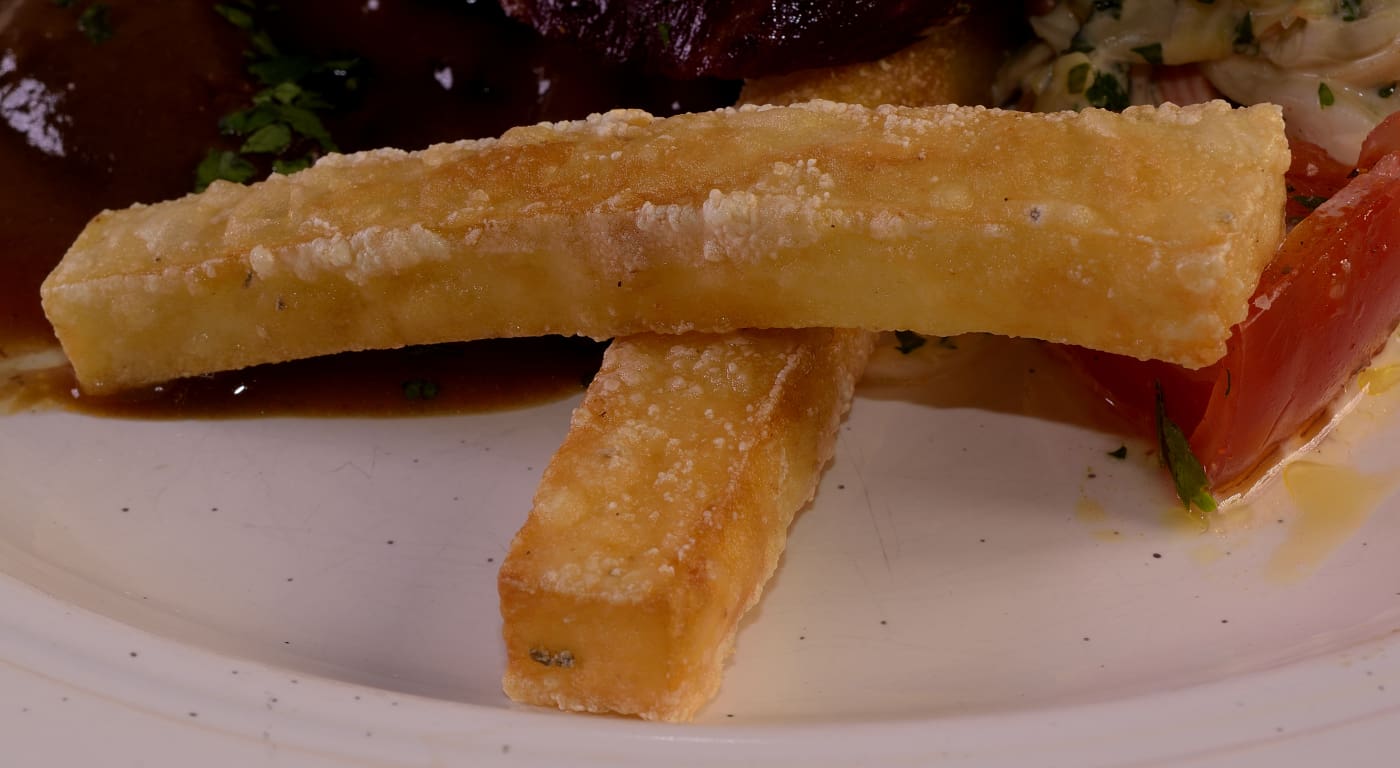
At service, heat the oil to 300 F/150 C and deep fry the potatoes until crisp–they will sink and then float again–about 5 minutes. The cornstarch will prevent them from being too brown.
Culmination

Let’s see what it looks like inside after three hours at 180 F/84C…
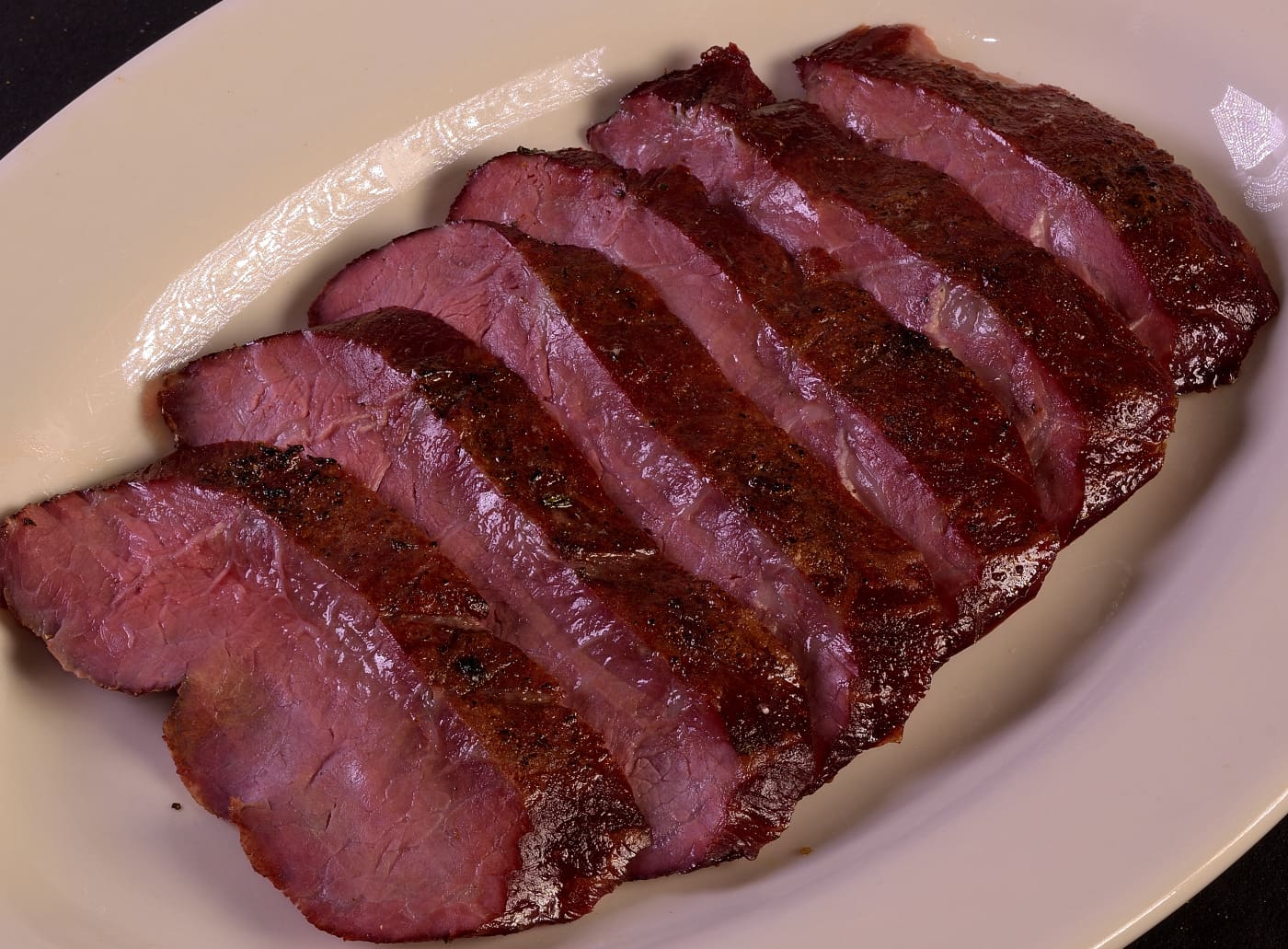
Yes!

The meat retains its rosy hue–internal temperature 125 F/52 C.
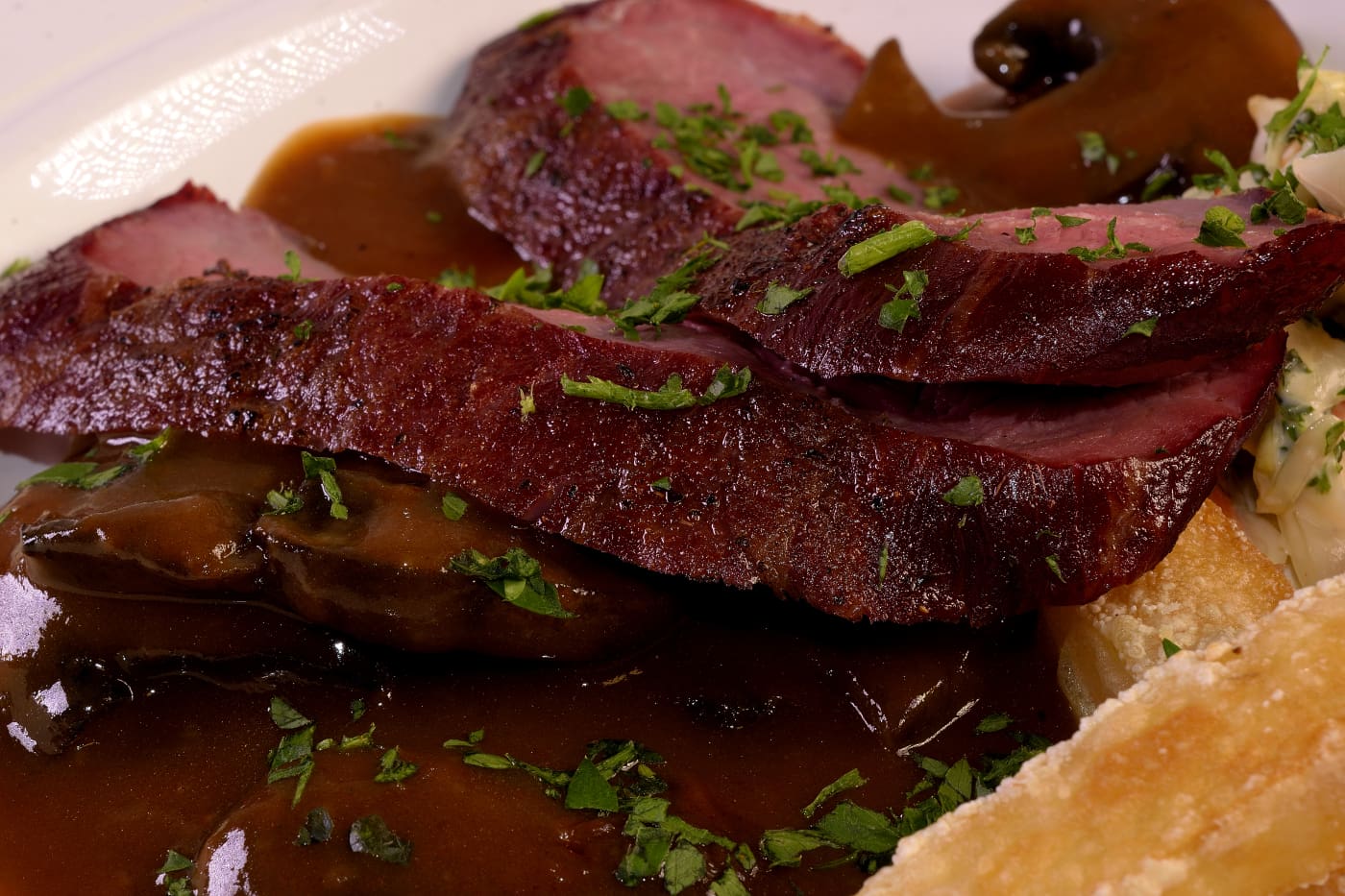
Even at the low smoker temperature, the seasoned bark is evident.
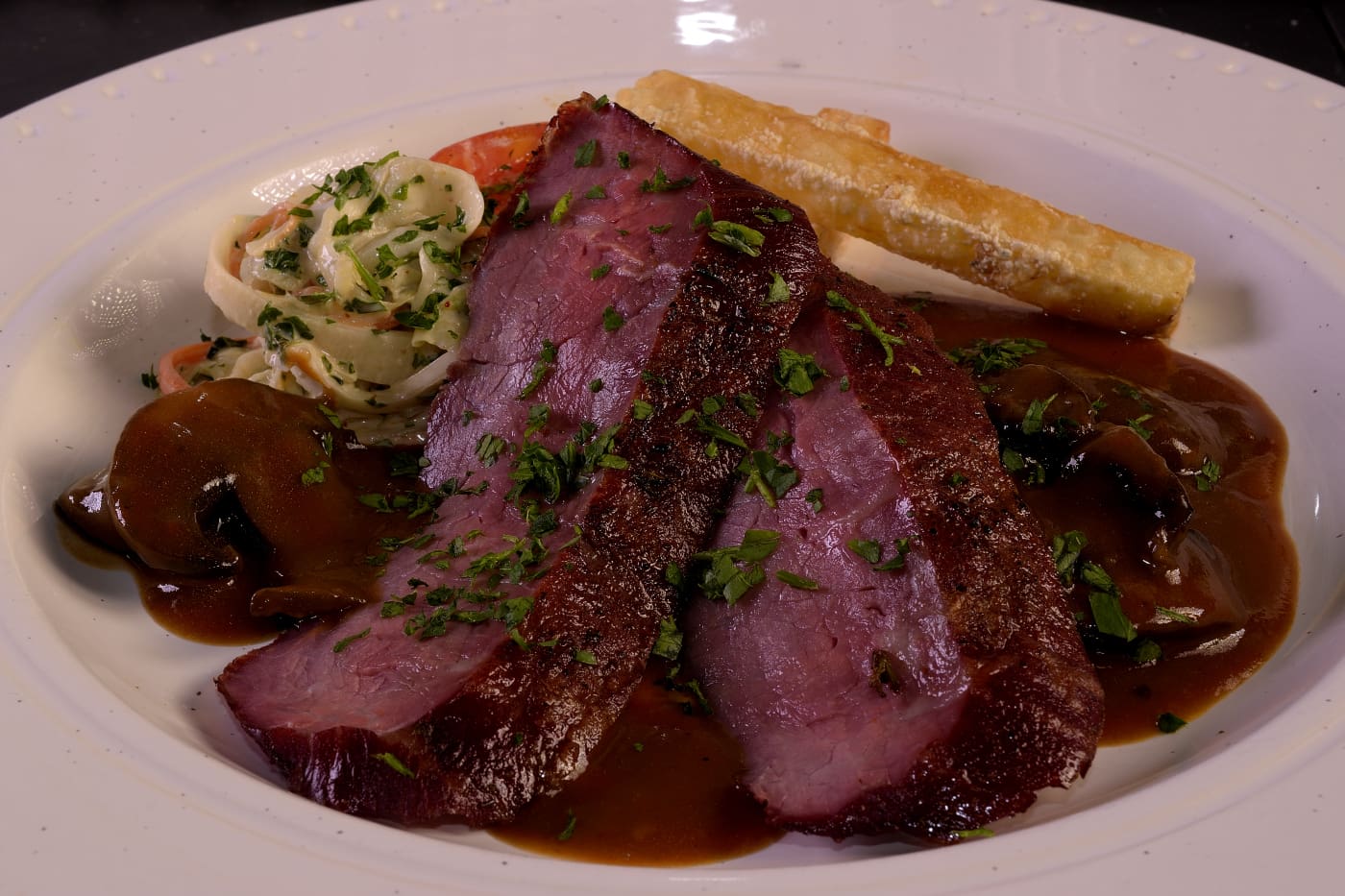
Norm King
